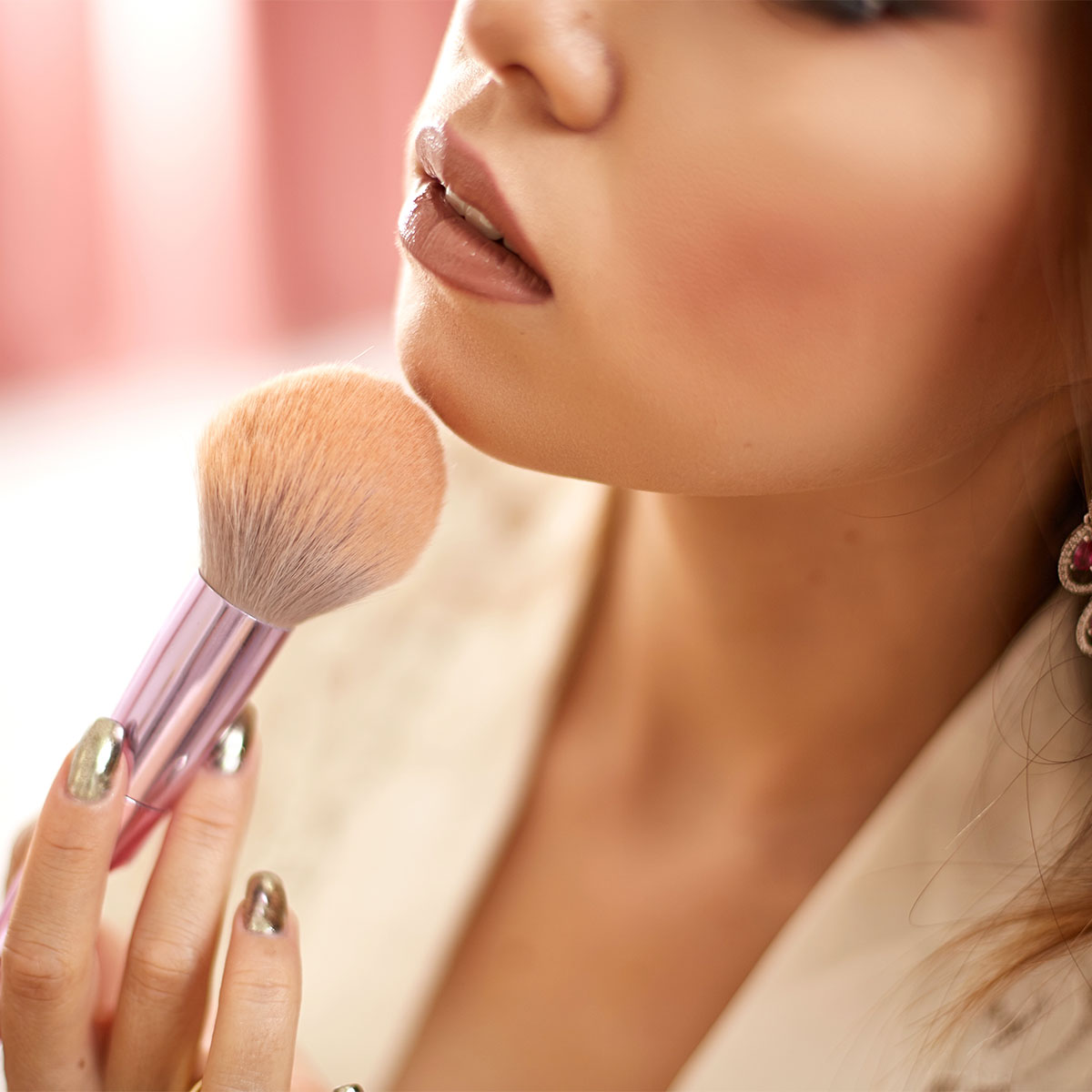
4 Blush Errors That Can Inadvertently Emphasize Fine Lines—And How To Prevent Them
Mistake #1. Using Powder Blush
Many of us have traditionally used powder blush for years, but on mature skin, Dennis explains that this kind of product can emphasize texture and wrinkles, whereas one that is cream-based can deliver a more natural, smoother effect. "Many people make the mistake of using powder blush instead of cream which can look more natural and radiant," she says.
Jackson agrees, and suggests that to obtain a "flush of pronounced color across your cheeks" without highlighting texture, it's best to use "a cream blush to achieve this look with ease."
2. Using The 'Wrong Color' For Your Skin Tone
When looking for the right color to match your skin and undertones, Dennis says that rose, terracotta, and coral tones can give the most "natural flush to the skin." Finding one that works for you is (like with concealer, lipstick, etc,) a process of trial and error, but finding your exact skin tone and undertones can be done in a store with swatches on your hand.
Jackson concurs and notes that when it comes to blush, it's all about "color and placement" (we'll get into the latter in a minute). "For beginners, I would say, with the ample video tutorials out there to follow along to, it’s easy to get started if you’re looking to try this makeup look on yourself," she recommends. Jackson also notes that "getting the placement of your cheek color and your eyeliner right" is essential for a more "youthful" look.
3. Applying It In The 'Wrong' Areas (Like Below The Nose)
While blush has the power to give you an instant facelift, it can also make your skin look more sunken, hollow, and droopy if applied in the wrong areas, Dennis says. "Blush should not be placed any lower than the end of the nose, so that it gives an uplifting effect," she advises.
With that said, Dennis shares that she is a fan of "underpainting," a technique that involves applying blush where your skin naturally has always reddened to mimic a true flush of radiant warmth. "I'm also a big fan of underpainting," she says, "underpainting is where you add a natural flush in areas of the skin like you had like a child." Typically, the makeup application process begins with primer, followed by foundation, and then other base makeup elements like concealer, blush, and contour are added.
However, according to Dennis, the underpainting technique flips this sequence on its head, placing foundation as the final step.
4. Not Cleaning Your Blush Brushes & Applicators Enough
Improper cleaning of makeup brushes and tools can impede the process of blush application. Neglecting to wash them often may cause breakouts, clogged pores and patchy-looking, uneven skin, Brice says. The way you apply your favorite makeup products matters, as well as the tools you use daily. In addition, this could then make fine lines and sagging skin more obvious. "Another error boils down to hygiene," she says.
"I think so many of us are guilty of not washing our brushes as often as we should." Brice adds that "applying with our fingers can be a mistake, if we don't first wash our hands." This can also lead to more breakouts, she emphasizes, or even infection.
The Bottom Line
In order to highlight your best assets with blush, Dennis and other artists often recommend adding it along your cheekbones and apples of your cheeks in an upward motion, aiming to draw the eyes up rather than down.
In doing this, your skin can have a lifted and livelier look, which many desire when looking for the right blush in any great anti-aging makeup routine.


